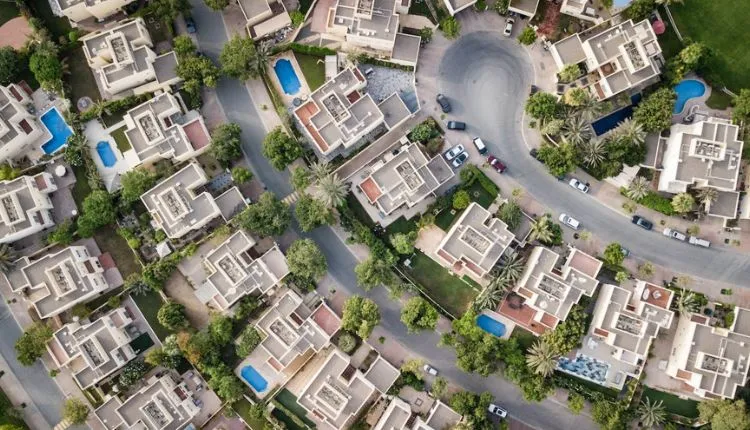A housing bubble is when a region’s median home price is higher than most people can afford. On the other hand, a healthy housing market has prices that align with local incomes, and more people can buy homes. This means there’s less risk associated with owning property than there would be during a housing bubble.
What happens during a housing bubble?
During a housing bubble, prices rise rapidly, and people buy homes they can’t afford. This is due to speculation and risky lending practices that create an environment where it’s easy to take out mortgages, but hard to pay back when interest rates go up or house prices fall. Here you can find real estate market bubbles explained in more detail, along with some reassurance that the real estate market isn’t in a bubble.
Lenders also make loans encouraging homeownership by offering low down payments and adjustable-rate mortgages (ARMs). These loans allow buyers with poor credit histories- or no credit history- to qualify for home ownership under relaxed standards compared with traditional fixed-rate mortgages.
ARMs offer the benefit of flexible monthly payments that adapt to changes in market conditions. For those seeking to enter homeownership with limited funds, ARMs provide an opportunity to start with little to no down payment while enjoying lower initial interest rates.
However, it’s important to remember that these lower rates will eventually revert to higher monthly payments later in life, particularly during retirement when many individuals sell their homes due to financial constraints, such as increased medical expenses.
How do you know whether you’re in a housing bubble?
- Look at the number of homes on the market. If there are more than there used to be and fewer people are buying them, that’s a sign of an oversupply.
- Look at the number of homes sold. If they’re selling slowly or not at all, then it could be because there’s too much competition and not enough buyers in the market.
- Look at average home prices. if they’ve gone up quickly in recent years without any corresponding increase in wages or rents (or if they’ve gone down). You may have a bubble on your hands!
- Compare average home prices against income–if they’re very high compared with what people earn each year (say 4 times higher), then again, this could indicate that something’s amiss with housing values overall.
What happens during a healthy housing market?
A healthy housing market is one in which prices rise, but not too quickly. Prices rise because of demand and not speculation. In a healthy market, there’s a balance between supply and demand.
When people buy homes for the right reasons–to live in them and make them their own–the value of those homes increases over time as they add value through renovations or upgrades.
When housing prices get too high or rise too quickly, it becomes harder for first-time buyers to enter into homeownership; this means that even though some markets may seem like they’re doing well now (with high levels of demand).
Suppose there aren’t enough affordable options for people who want to transition into homeownership. In that case, things could change quickly once again when supply runs low relative to demand.
How do you know whether you’re in a healthy housing market?
A healthy housing market is one in which prices increase steadily, not too fast or too slow. The inflation rate is essential when determining whether housing prices are rising at a healthy pace.
Inflation refers to the increase in the cost of goods and services over time, which can be measured by how much more expensive things have become (i.e., how much more it costs to buy groceries today than it did five years ago).
For example: let’s say that 10 years ago, your monthly grocery bill was $400 per month; this year, it’s gone up by 2% per month–so now your monthly grocery bill would be $420 per month (assuming there were no other factors involved).
If this pattern continues consistently over time, we expect our wages/income levels to increase accordingly to avoid falling behind on those expenses. However, if wages do not keep up with inflation, people will fall into debt because they cannot afford necessities such as food without taking out loans or credit cards.
There’s a big difference between a healthy housing market and a housing bubble.
A healthy housing market is one that steadily increases in value. On the other hand, a bubble is characterized by rapid price increases that are unsustainable and eventually lead to a financial crisis when prices fall suddenly.
A housing bubble can happen anywhere–it’s not limited to any particular country or region of the world. However, certain factors make some countries more susceptible than others:

